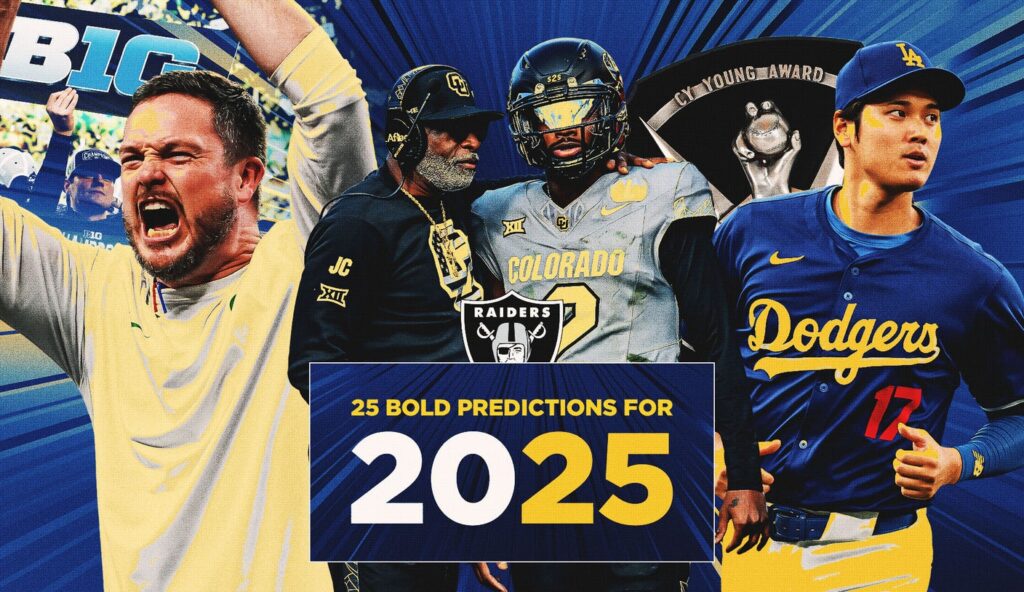The 2023 quarterback draft class has already had almost two full seasons in the NFL.
The group still generates more intrigue than certainty about who they will become in the league.
There’s the Texans’ CJ Stroud, last year’s Offensive Rookie of the Year, who turned in arguably the best rookie quarterback season ever. This season, however, all the talk has been about regression. Then there are the Panthers’ Bryce Young and the Colts’ Anthony Richardson, who were benched earlier this season. But they have shown steady improvement since being reinserted as QB1. The same could be said for the Titans’ Will Levis, who has been one of the league’s most efficient quarterbacks since returning from a shoulder injury that sidelined him for three games.
As the different experiences of the top four quarterbacks in the 2023 draft show, the development of young passers can be nonlinear.
“We’re looking for guys who are consistent in their approach,” Titans coach Brian Callahan said Wednesday about what’s important for a young quarterback. “Their weekly routine, how they practice, that’s a big part of what it looks like. The consistency in practice. And then you’ll see when we’re making mistakes, if we’re learning from them.” Are there repeated mistakes or are we repeating things we have talked about several times?
“[Corrections are] “In general, what you’re looking for, and a very general theme, is that it may not necessarily show up exactly on Sunday or your performance… because there are so many factors involved,” Callahan continued. “But repetition of mistakes, as limited as you can do that, that’s when you see growth. And then get some training.”
So why has Stroud struggled? Why have Young, Richardson and Levis made progress?
Here’s a snapshot of where each quarterback stands with five weeks left in the regular season:
CJ STROUD
Last season (15 games): 63.9% completion rate for 4,108 yards (8.2 yards per attempt) and 23 touchdowns against five interceptions with a 100.8 passer rating and 46.7% passing success rate.
This season (13 games): 63.3% completion rate for 3,117 yards (7.2 yards per attempt) and 15 touchdowns against nine interceptions with an 87.9 passer rating and 42.9% passing success rate.
Why the fall:
Defenses are playing it differently, for example.
An example: 19.2% of his dropbacks this season have been against Cover 2 (two deep safeties), compared to just 10.6% last year, according to Next Gen Stats, making it more difficult hit deep routes and crossings. He had a lot of success last season. Additionally, he’s seeing less base defense (four defensive backs) in 2024. Opponents were at it 26% of the time when he dropped back as a rookie, compared to 20.7% this season. Armed with a season’s worth of film on Stroud, defenses are respecting his ability to throw the ball.
Injuries to key Texans haven’t helped either. Veteran wide receiver Stefon Diggs will be out for the season with a torn ACL, while senior receiver Nico Collins missed five games with a hamstring injury before returning in mid-November. Play-calling and undisciplined play have also been factors. But there may have been no greater culprit in Stroud’s regression than the offensive line, which has been one of the worst in the NFL this season. Houston ranked 18th in pressure rate allowed and tied for 22nd in sacks allowed last season. This season, the O-line ranks 31st in pressure rate allowed and 28th in sacks allowed, according to Pro Football Reference.
Setting aside, Stroud appears to have missed more open throws than last year and there has been an increase in his interception rate (from a league-leading 1.0% as a rookie to 2.1% this year). But his play-to-bill rate is actually marginally better in 2024, according to Pro Football Focus: 2.6% this season compared to 2.8 as a rookie.
Stroud’s step back can be better described as a sophomore crisis and a move closer to his average as a player than the beginning of a downward trajectory. He’s still the best quarterback in this class.
BRYCE YOUNG
First two games of the season (pre-bank): 55.5% completion rate for 245 yards (4.3 yards per pass attempt) with no touchdowns against three interceptions with a 44.1 passer rating
Last five games (after bench): 60.3% completion rate for 1,082 yards (6.4 yards per pass attempt) with six touchdowns against three interceptions with a passer rating of 83.5.
Why the improvement:
Young has said he feels most comfortable in Dave Canales’ system. Where this is noticeable, according to the first-year coach, is in his decision and his play in critical situations.
The numbers back it up.
Since being reinstated as the Panthers’ QB1, Young has a 58% completion rate on seven yards per attempt, a 3:0 touchdown/interception ratio, a plus-2.3 passing EPA and a passer rating of 99.8 on third down, compared to a 33.3% completion rate, 1.7 yards per attempt, a 0:1 touchdown-interception ratio, -16.2 and an EPA of 14.6. third-down passer rating over two weeks this season, according to Next Gen Stats.
The former Heisman Trophy winner’s numbers have also improved dramatically in the red zone: a 53.1% completion rate for 3.1 yards per attempt, a 5:1 touchdown/interception ratio, -3.4 and a passer rating of 86.2 inside the 20.-yard zone in the last five games, compared to a 0% completion rate (five attempts), minus -8.4 passing EPA and a passer rating of 39.6 two games.
The Panthers have yet to fully recommit to Young as their franchise quarterback, but he appears to be working his way toward another season as Carolina’s QB1.
ANTONIO RICHARDSON
First six games of this season (before going to the bench): 44.3% completion rate for 958 yards (7.2 yards per pass attempt) and four touchdowns against seven interceptions with a passer rating of 57.2; 41 carries for 242 yards (5.9 yards per rushing attempt) and one touchdown; two lost fumbles
Last three games (after the bench): 52.4% completion rate for 553 yards and three touchdowns against two interceptions with a 75.9 passer rating; 29 carries for 141 yards (4.8 yards per rushing attempt) and three touchdowns; a lost ball
Why the improvement:
Richardson is still struggling to find consistency as a passer, but the Colts have been willing to lean on his running ability.
He is averaging 7.3 quarterback designed runs in three starts after he was benched, compared to just 3.3 in the six starts before he was benched, according to Next Gen Stats. He had one rushing touchdown in his first six games this season, but has three rushing scores in his last three appearances, all of which came in the red zone.
Richardson has said running the ball helps him get into the flow of the game, and coach Shane Steichen appears to have finally removed the barriers for last year’s No. 4 overall pick, who has led two game-winning drives in the last three weeks. . There seemed to be some hesitation on Indianapolis’ part at first, given their injury history.
Indianapolis has recommitted to Richardson as its quarterback of the future, but significant progress must continue to make him the Colts’ QB1 beyond 2025.
LEVIS
First five games of this season (before shoulder injury): 66.4% completion rate for 699 yards (5.5 yards per pass attempt) for five touchdowns against seven interceptions with a passer rating of 70.7; three lost fumbles
Last four games (after shoulder injury): 61.7% completion rate for 960 yards (8.3 yards per pass attempt) and seven touchdowns against two interceptions with a passer rating of 101.4; a lost ball
Why the improvement:
Levis has a renewed confidence in throwing the deep ball, which had been his strength in college and last year, but had disappeared at the start of this season.
He is averaging 8.3 yards per pass attempt in four starts since returning from his shoulder injury, compared to 5.5 in the first five games of the season. It’s apparently a byproduct of his growing comfort in Brian Callahan’s offense. The former Kentucky star said he doesn’t try to do as much anymore.
Levis’ improved decision-making is reflected in his 101.4 passer rating over his last four games, a drastic jump from 70.8 in his first five appearances in 2024. He is averaging 0.75 turnovers. ball per game in the last four games, compared to two in his first five games.
However, navigating the pocket is something you will need to work on. While the Titans offensive line has had its issues, there have been several occasions where Levis held the ball too long or was sacked. He has been sacked 5.5 times per game since Week 10, a slight increase from his first five games of the year (5).
Like Young, Levis may have earned QB1 status for at least one more season.
Ben Arthur is an NFL reporter for FOX Sports. He previously worked for The Tennessean/USA TODAY Network, where he was the Titans beat the writer for a year and a half. He covered the Seattle Seahawks for SeattlePI.com for three seasons (2018-20) before moving to Tennessee. You can follow Ben on Twitter at @benyarthur.
[Want great stories delivered right to your inbox? Create or log in to your FOX Sports account, follow leagues, teams and players to receive a personalized newsletter daily.]
Get more from the National Football League Follow your favorites to get information about games, news and more.

 Workout
Workout
 Meditation
Meditation




 Contact Us
Contact Us










